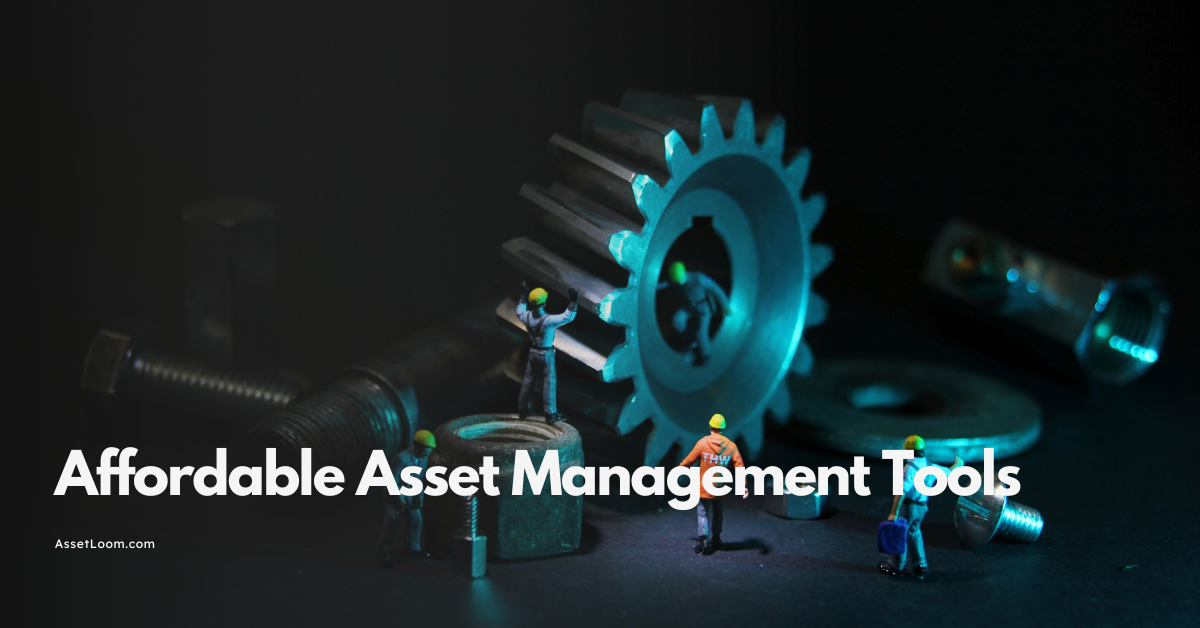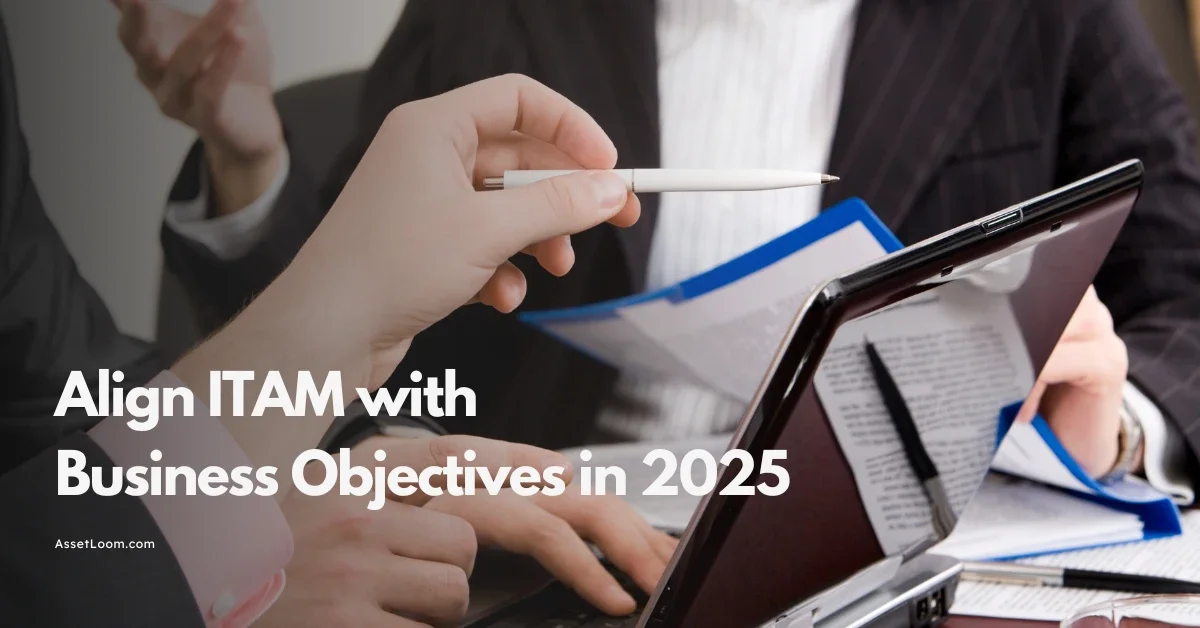Blockchain for IT Asset Management: Is It the Future?
Blockchain isn’t just a future idea, it’s a growing reality. The value it offers is clear: trusted records, stronger visibility, better collaboration, and less time spent chasing down information.
Let’s be honest, keeping track of IT assets isn’t getting any easier. With remote work, cloud services, and constant change, it’s tough to know exactly what equipment or software is out there, where it’s being used, and whether it’s up to date.
If you’ve ever had to hunt down who’s holding onto a device, dig through email threads for a license key, or scramble to prep for an audit, you’re not alone. These headaches are all too common, and traditional tools like spreadsheets just aren’t cutting it anymore.
That’s where blockchain starts to get interesting. Not in a hype-driven, crypto kind of way, but as a real solution to everyday IT asset management problems.
In this post, we’ll break down what blockchain actually is, how it could help make your asset tracking smarter and more reliable, and what steps your team can take to start thinking ahead.
What Is Blockchain? A Simple Explanation
Blockchain isn’t just about cryptocurrency. At its core, it's a secure, digital way to record and share data. Imagine a digital ledger that logs every transaction or update in a chain of time-stamped blocks. Once something is added, it stays there. It can’t be changed or deleted.
What makes it useful for IT asset management is that this ledger isn't stored in just one place. It’s shared across a network, so everyone involved; whether it's IT, procurement, or finance, sees the same version of the truth. That means no more second-guessing which spreadsheet is most current or who made the last update.
Because these records are locked in and verified, they create built-in trust. Every time an asset is moved, serviced, or retired, that event is logged automatically in a permanent and reliable history.
Example: Let’s say a laptop was assigned to a new employee. With blockchain, the assignment is instantly recorded, including who approved it, when it happened, and the device’s full history. Months later, when it’s time for offboarding or an audit, no one has to chase emails or dig through old records. The full trail is already there’s clear, accurate, and trusted by everyone.
You don’t need to dive into the technical side. What matters is that blockchain offers a smarter, more trustworthy way to track assets with less hassle and more confidence.
Common Challenges in IT Asset Tracking Today
IT teams are responsible for knowing what assets the company owns, where those assets are, and who’s using them. But that’s easier said than done; especially when tools and records are disconnected or outdated.
1. Inaccurate or Outdated Records
It’s easy for asset records to fall out of sync. Maybe someone forgot to update a spreadsheet when a laptop was reassigned. Maybe a status change wasn’t logged after a repair. Over time, small gaps like these lead to big confusion.
You end up second-guessing your reports, double-checking with team members, or wasting time chasing down missing details.
2. Untracked Assets and Shadow IT
Sometimes assets don’t follow the official process. A department orders a few extra laptops. Someone signs up for software without looping in IT. These things happen, but they make tracking harder and introduce security risks.
If an asset isn’t on your radar, you can’t manage or protect it properly.
3. Time-Consuming, Stressful Audits
Audits shouldn’t feel like a fire drill, but they often do. Finding the right data, confirming ownership, proving maintenance history; it takes hours, sometimes days. And if something’s missing, the pressure only builds.
4. Siloed Teams and Conflicting Records
IT might track devices. Procurement tracks orders. Finance tracks depreciation. When each team uses its own tools, it’s easy to end up with conflicting information. One group says an asset was retired, another thinks it’s still in use.
How Blockchain Can Help Fix These Problems
Blockchain won’t replace your IT asset management process overnight, but it can significantly improve how it works. Think of it as a behind-the-scenes upgrade that brings consistency, clarity, and trust to every step of the asset lifecycle.
Here’s how blockchain addresses today’s biggest ITAM challenges and what that looks like in practice.
1. Keeps Records Accurate Without Manual Effort
Most asset tracking systems rely on people remembering to update them. When someone forgets to log a change, that asset's record is instantly out of date. Multiply that across dozens or hundreds of assets, and it becomes a serious problem.
Blockchain captures every asset event in real time and stores it permanently. Once an asset is assigned, moved, serviced, or retired, that action is logged with a timestamp and cannot be changed. There is no risk of someone editing over previous data or deleting a record by mistake.
Clear Steps:
- When an asset is reassigned, the change is recorded instantly on the blockchain.
- Every update includes who made the change, when it happened, and what was changed.
- No need to rely on a central admin or a spreadsheet, it’s visible to all authorized users.
2. Makes Hidden Assets Visible and Trackable
Shadow IT is more common than most teams admit. Whether it's a department buying their own hardware or a new hire downloading tools without approval, assets can easily fly under the radar. These gaps create security and financial risks.
Even if an asset doesn't enter the system through the official procurement process, it can still be added to the blockchain from the moment it is discovered. From that point forward, every event related to the asset is tracked and visible across the organization.
Clear Steps:
- Once a new device is acquired by any team, it’s registered into the blockchain ledger.
- The record includes purchase details, who logged it, and any associated documents.
- Even if IT wasn’t involved at first, they can now see and manage the asset from that point forward.
3. Simplifies Audits With Built-In Transparency
Audits often become a mad dash to gather and verify data. IT and finance teams spend hours sorting through spreadsheets, ticket logs, and emails to prove what happened to each asset.
Blockchain automatically builds a complete and tamper-proof timeline for every asset. It captures purchase dates, handoffs, service records, and retirement status in one place. There is no need to assemble the history manually.
Example: During an audit, you're asked to provide the full lifecycle of five devices. Instead of calling around and checking multiple systems, you pull the blockchain ledger and instantly present a clear, time-stamped record for each one.
4. Gives All Teams Access to the Same Trusted Data
Different departments often maintain different systems and data. This leads to conflicting asset records, confusion about ownership, and wasted time trying to get everyone on the same page.
Blockchain acts as a single source of truth that all teams can rely on. Whether it's IT, finance, or procurement, everyone sees the same real-time information about each asset.
Clear Steps:
- Each department accesses the same blockchain-based record set, updated in real time.
- Permissions ensure sensitive financial or security data is still protected.
- Everyone makes decisions based on accurate, synchronized data, no more guesswork.
Blockchain doesn’t require you to throw out your current asset management practices. Instead, it strengthens them by providing a trusted, real-time, and permanent foundation for your data.
Here’s what your team gains:
- Accurate records without extra effort
- Complete visibility, even for previously untracked assets
- Audit readiness built into the system
- Better collaboration between departments
More than anything, blockchain removes the guesswork from IT asset management. You no longer have to ask, "Is this data correct?" you’ll already know it is.
Benefits of Blockchain for IT Asset Management Teams
Blockchain isn't just about security or future trends. It brings real, practical benefits that make day-to-day asset management easier, cleaner, and more reliable. Here's what that looks like in action.
- A Clear and Permanent Asset History: Every time something happens to an asset, whether it’s assigned, serviced, moved, or retired. It’s automatically recorded. That history can’t be changed or deleted, which means you never lose track of what happened or when it happened.
- Everyone Sees the Same Information: No more version conflicts or second-guessing reports. Whether you're in IT, finance, or procurement, you're looking at the same up-to-date record. This helps eliminate confusion and keeps everyone aligned.
- Smarter Processes with Automation: You can set rules that take care of routine actions. For example, when a device reaches the end of its useful life, the system can automatically flag it for disposal or replacement. No reminders needed.
- Audits Without the Scramble: Since every change is time-stamped and stored, you’re always ready for an audit. You don’t need to dig through spreadsheets or pull together reports at the last minute. The full record is already there, accurate and complete.
- Less Manual Work for Everyone: When asset updates are automated and trustworthy, your team spends less time entering data or correcting mistakes. That means more time to focus on the work that actually moves things forward.
- Better Collaboration Between Teams: When everyone has access to the same reliable data, communication gets easier. IT knows what’s been deployed, finance knows what’s been spent, and procurement knows what’s on the way. There’s no need to double-check or cross-reference across systems.
Is Blockchain a Practical Future for Asset Management?
Blockchain is still emerging in IT asset management, but it’s gaining real momentum. While not yet widely adopted, it's already being used in related areas like supply chain and logistics; where trust, traceability, and accuracy are essential.
For organizations managing distributed assets, working across departments, or dealing with regular audits, blockchain is a strong fit. It brings structure and visibility where traditional systems fall short.
Yes, there are some hurdles. Cost, technical knowledge, and platform readiness are valid concerns. But those barriers are starting to shrink as more vendors innovate and more teams explore the possibilities.
You don’t have to jump in all at once. A smart approach is to start small, test it with specific use cases, and prepare your team gradually. That way, you’re ready as the technology continues to mature.
=> IT Asset Management Trends 2025: What IT Teams Need to Prepare For
Final Thoughts
Blockchain isn’t just a future idea, it’s a growing reality. While it may not be everywhere in IT asset management yet, the value it offers is clear: trusted records, stronger visibility, better collaboration, and less time spent chasing down information.
For teams that want to move beyond spreadsheets, reduce audit stress, and build more reliable systems, blockchain is worth exploring. You don’t need to overhaul everything today. But starting the conversation now puts your team in a better position to adapt as the technology matures.
At its core, blockchain is about clarity, accountability, and trust. And that’s exactly what modern IT asset management needs.

Subscribe for Expert Tips and Updates
Receive the latest news from AssetLoom. right in your inbox


